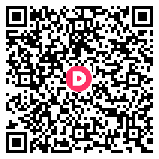2014's battle for dashboard supremacy #2
Before we look at the main players in the world of smartphone connectivity and infotainment, let's take a step deeper down, to the real-time operating systems that serve as foundational elements. These are the underlying systems upon which car manufacturers build the interfaces that we actually use, but they're so low-level you (hopefully) never see them. Just like Android is built atop Linux and Mac OS X is built atop Unix, in-car infotainment systems have their own foundations.
In the past these base operating systems were often custom, but increasingly carmakers are turning to industry-standard solutions. Ford was one of the first, working with Microsoft to develop SYNC. Beneath SYNC lies a version of Windows Embedded, the same foundation that has powered solutions used by Hyundai, Kia, and others. But, that's where any similarities end. Windows Embedded just provides the basics to keep the lights on, as it were. Everything running on top is custom.
BlackBerry's QNX is another major choice, and has been in the news quite a bit with the talk of Ford dropping Microsoft in favor of this three-letter powerhouse. QNX is run in everything from nuclear power plants to jet fighters, which shows its general level of reliability. Automotive is a major market for QNX, increasingly BlackBerry's most valuable asset.
Another choice is Linux, a custom flavor as specified by the Genivi Alliance, a consortium of auto manufacturers including GM, BMW, Intel, Delphi, and many more.
The important thing to note here is that the choice of this underlying operating system has little or no impact on what sorts of mobile devices the resulting car will support. Ford's Sync AppLink, running on top of Windows Embedded, doesn't offer any support for Windows Phone. Audi's MMI is built atop BlackBerry's QNX, yet the MMI Connect app isn't offered for BlackBerry 10. You get the picture.
Most current attempts at in-car smartphone connectivity -- of the sort more advanced than stringing an audio cable from your headphone port to your car's head unit -- have been provided by the car manufacturers. As such, they're largely very proprietary. Toyota Entune, BMW Connect, Cadillac CUE, Ford Sync AppLink... the list is long and they all share one common attribute: they're completely incompatible with each other.
As it stands, if you're Pandora and you want your app to play in every car on the road, you're stuck extending and rewriting your app again and again. That requires a lot of cost and labor. Ford has been making the strongest effort to standardize by opening its AppLink system and inviting anyone else who wants to use it. However, we must read this as "We'd really want everyone to play ball together, but you're gonna have to come to our field and play with our ball."
Ford's solution is a good one, if limited, providing a simple interface for apps to stream audio through the car and receive voice commands from it. Apps can even pull in some information from car data like location and speed. The openness of the program has been a boon for developers, with over 60 apps now certified and Ford suffering a backlog of test dashboards for developers. "We can't keep up with building the bloody things," Pim van der Jagt, managing director at Ford, told us. Despite that, Ford is still the only manufacturer to support AppLink.
As it stands, no auto manufacturer connectivity solution has come close to establishing a standard. Thankfully, the consumer electronics industry is having a little more success.
In 2010, Nokia started showing off something called Terminal Mode. It failed to receive much traction, though it's unclear whether that was due to the killer '80s sci-fi movie name or its origins in a company that was already showing signs of struggle. Now, fours years later, with a new name -- MirrorLink -- and a lot more support, it's starting to show some real promise. (Despite Nokia parent company Microsoft only now deciding to officially add support in Windows Phone.)
"Nokia is committed to Microsoft. I am from Nokia, otherwise I wouldn't be here," J??rg Brakensiek, principal architect at Nokia, told us. "We are working on it, we are committed to do with this."
Though Nokia kicked it off, MirrorLink is a standard maintained by the Car Connectivity Consortium, which counts among its members major auto manufacturers like GM, Honda, Hyundai, Toyota, and Volkswagen, and smartphone makers LG, Sony, HTC, and Samsung. It has evolved, then, into the potentially perfect mix between industries. Here they've all worked together to define standards and a certification process that ensures apps meet global distraction guidelines. If apps are safe, they become MirrorLink approved and can be displayed on any MirrorLink-equipped car.
Brakensiek is quite rightly raising the concern that the solutions from Apple and Google, which we'll discuss momentarily, may include locks and approval blocks for apps that replicate core functionality of the companies that do the approving. However, interestingly, MirrorLink does allow for auto manufacturers to make their own apps and certify them exclusively for their cars. So, there is still an opportunity for differentiation, but to get there you must necessarily open the gates to the creative minds of the world's developers.
Many have made that choice. Toyota was among the first major manufacturers, deploying it in the iQ in 2011. According to Panasonic's Masaya Nishinaka (Panasonic manufactures most of Toyota's in-car infotainment systems), the plan is to come across the model range very soon. Honda has also deployed MirrorLink in its Fit and Civic, a wider roll-out coming next year. GM indicated that it will add MirrorLink in the future and it's coming to the Volkeswagen Polo in a matter of months -- for a 170 Euro premium over the base car. Javier Verastegui, who works at VW's Services and Apps division, told us the company wants MirrorLink in "every model as soon as possible. The sooner the better. This is the year of MirrorLink. This year it has to succeed." Andy Lee, director at HTC, agrees: "With the MirrorLink standard becoming ready, there will be more and more products available from member companies in 2014, so we believe that 2014 will be the year of MirrorLink."
If it does, it'll be no thanks to Ford, or to Apple, for that matter. Ford's van der Jagt said that while standardization is a good thing, this standard may not be. "We have some concerns about what they allow, that you can actually mirror the display of your device. We're very critical of that part... We don't want to mirror. We really want the kind of interface we have now."
And Apple? The door is open if it wants to join in. Said Brakensiek from Nokia: "We'd love to have Apple on board. We have been doing our share in order to use technologies in MirrorLink that are not proprietary, that would prevent other handset manufacturers from coming onboard." Unfortunately for him, Apple has its own plans.




評論
評論
推薦評論
暫無評論哦,快來評論一下吧!
全部評論(0條)